606 Search Results for visual support
March 25, 2013
by Robin Parker -

Happy Passover & Easter to those who celebrate! There are some great free visual supports to help ALL children participate in the holiday routines. We are thankful to Gateways Access to Jewish Educationand Positively Autism– Daily Autism Freebie for making these readily available. Whether you use them for your students, clients, family, or guests, we hope everyone has a wonderful holiday and everyone is included. Passover The Seder Order, The Ten Plagues, Passover Social Stories, Passover Prayers, Passover Songs, Passover File Folder Activities Easter Going to Church on Easter Travis the Train Goes on an Easter Egg Hunt Decorating Easter Eggs Going on an Easter Egg Hunt Easter Vocabulary Easter Songs (scroll to the bottom of the page for the videos)
February 24, 2013
by Carole Zangari -

We’re always looking for great materials to share with colleagues and parents about topics related to AAC. This video by OCALI (the Ohio Center for Autism and Low Incidence) has been one of our favorites. It gives a brief overview of why visual supports are so important in the educational and clinical services provided to individual with ASD and other developmental disabilities.
November 9, 2012
by Carole Zangari -

No matter where they work, SLPs supporting people who use AAC generally do what they can to improve communication across environments. In an earlier Simple Start post, we talked about using photos of places within a school to support language comprehension. By showing a picture of the cafeteria or gym as we say those words, we can help both students with language processing difficulties and those with behavior regulation issues. — In this post, we extend the same concept to travels in and around the community. Here are directions for making visual supports that can be used with students who have community-based instruction or by families as they go about their weekly errands and routines. Simple Start: Visual Support for Places in the Community Take photo of locations in the community that the AAC user is likely to visit. Insert them into a document and add labels for each one... [Read More...]
October 21, 2012
by Carole Zangari -

We love this idea from Amy Laurent about Helping Hands, a positive and proactive way for children to get help when they need it. The strategy involves placing a visual support, such as a picture of Helping Hands, around the classroom in places where the student is likely to need assistance. Her Helping Hands video explains it in more detail. We love the proactive nature of this strategy, which aims to prevent frustration, rather than waiting for a problem to occur. We took a stab at creating some visual supports that can be used with the Helping Hands strategy, and you can download it below.
October 19, 2012
by Carole Zangari -
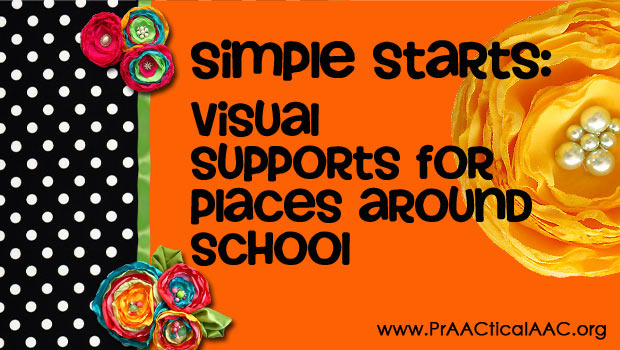
Simple Start is a series of posts that discuss AAC-related tools and strategies that are rather quick and easy to make or implement. Whether you are brand new to AAC or relatively experienced, we all come to a point where complicated just won’t do. – In our first Simple Start, we’re talking about Picture Card Rings, a type of visual support for language comprehension. The National Professional Development Center on Autism Spectrum Disorders defines visual supports as any tool presented visually that can help a person function in their day-to-day life. In this case, we’ve narrowed it down to the specific case of using photos of places around a school to help the student better understand words like ‘cafeteria’ and ‘clinic.’ — Most people with AAC needs do not require a communication system that represents language through photographs. This is a very good thing since there is no way to... [Read More...]
October 9, 2012
by Carole Zangari -
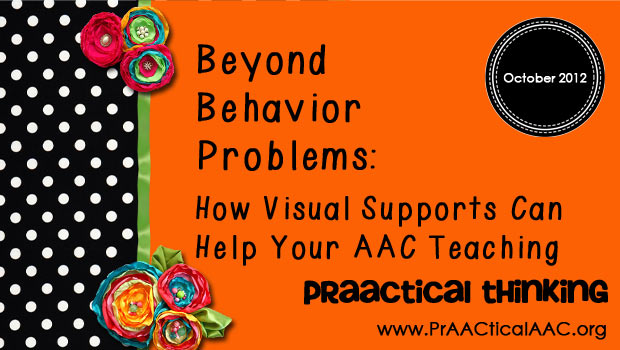
Visual supports are not just for people with behavioral challenges. In this post, we share some ideas of using visual schedules and other supports to enhance comprehension and language learning. Let’s look put this into a clinical context. Marvin is a high school student with intellectual disabilities and cerebral palsy who is learning to use a high tech SGD. He is a personable young man who engages easily and comes to each session with a ‘ready to learn’ mindset. Most of Marvin’s goals revolve on learning to build sentences using core words. Although he has very limited literacy skills, he really, really wants to learn word prediction. This presented a bit of a dilemma, as I typically don’t begin to teach word prediction until spelling skills are approaching the third grade level. Marvin has some terrific splinter skills but his overall spelling skills are probably around the mid-first grade level.... [Read More...]
October 3, 2012
by Robin Parker -
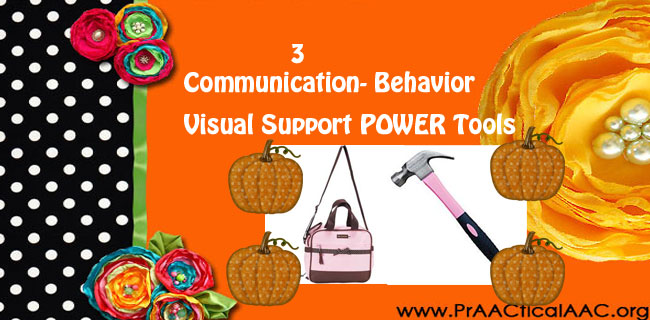
Behavior challenges tend to be a major concern of speech-language pathologists, parents, and educators alike. It is the area that is often most nerve wracking for many professionals and families. But once you get a set of strategies that help you have a plan, most challenging behaviors can be reduced. We like to think of challenging behaviors as opportunities 1: for the learner to practice understanding or expression of communication and language and 2: for facilitators/educators to use behavior strategies or learn new ones. So in order to be best prepared for challenging behaviors, start a Communication-Behavior Strategy Tool Kit. Here some powerful tools that will help ALL learners. 3 Power Tools for Communication & Behavior Choice Boards- helps give a learner power but under our guidelines and boundaries. With choice boards, a student learns more communication while having less power struggles/behavior challenges. Opportunity to teach choice making, expression... [Read More...]
August 5, 2012
by Carole Zangari -
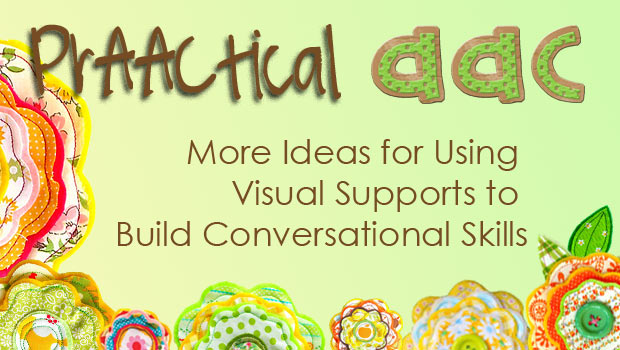
Cohesion is a tough concept for many of our learners who are developing their AAC skills and struggling to build relationships. In this week’s featured video, Joel Shaul, from Autism Teaching Strategies, discusses how to use two metaphors for building cohesive conversations. One is the idea of links in a chain and the other is the girders of a building. Of course, we are big fans of the use of visual supports whenever we talk and teach. — Although the focus here is learners with ASD, we’ve used this and similar strategies many kinds of learners. Hope you enjoy this informative video. – – – –
July 22, 2012
by Carole Zangari -
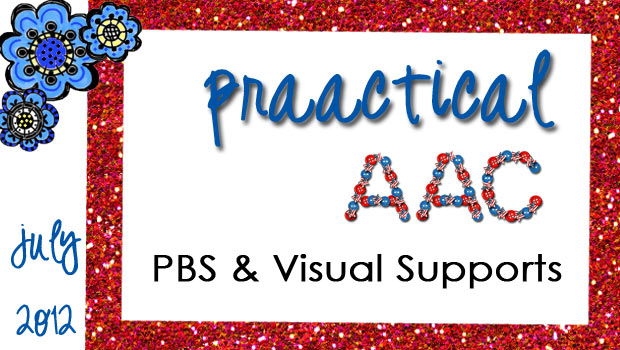
This week’s video comes from Katie Thomas of the Autism and Tertiary Behavior Supports Project of the Kansas Technical Assistance Network and deals with the who, what, when, where, and why of using visual supports to promote positive behavior. – There are several supporting documents including the PowerPoint handout, and some of the supports they review (e.g., calendar, first/then, wait card). We love the detailed description and the many examples they share. – Click here to view the video. –
July 15, 2012
by Carole Zangari -
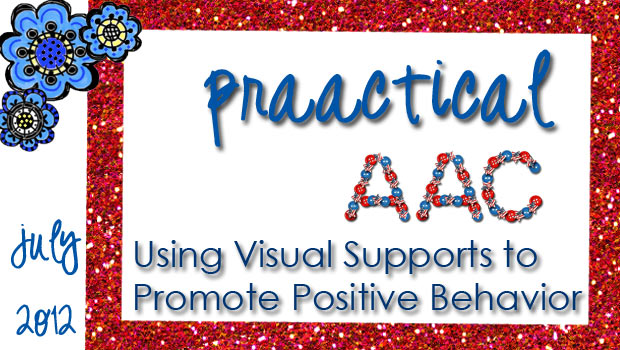
This week we have a series of short videos from the Geneva Centre for Autism on strategies to support positive behavior. Enjoy these explanatory videos on Supporting Positive Behaviors During Changes, Change in Routine, and Learning to Wait. –









